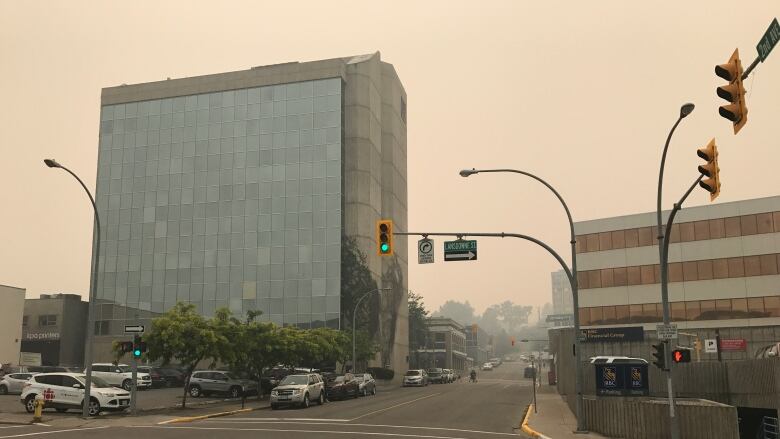Kamloops summer of 2017 smokiest ever recorded
City set new record for most hours in a summer with low visibility by a wide margin thanks to smoke

The 2017 forest fire season meantKamloopshad its smokiest summer ever, according to Environment Canada.
A meteorologistsays the city'slocal record for highestnumber of hours in a summer with low visibility meaning hours where it was difficult to see more than 9.7 kilometres in the distance was broken by a wide margin thanks to wildfire smoke.
The previous record was 81 hours, set in 2010. In 2017, it was 387 hours.
"That's pretty close to 18 per cent of the hours throughout the summer," said meteorologist Doug Lundquist. "It's just a smashing of that record."
Lundquist says visibility is a good indicator of how much particulate matter is in the air.
In early August, nearby wildfires brought the city's Air Quality Health Index up to 49, another record. Anything over 10 is considered a very high risk to human health.
Flights from the city's airport were cancelled due to low visibility and people were advised to stay indoors.
While Environment Canada only looked at Kamloops data, he says the smoky skies were felt acutely across the region.
"I live in the B.C. Interior, and Kelowna was very smoky as well," he said. "I noticed my eyes were definitely burning and I felt people were saying they were tired. It was harder to breathe and harder on our body systems."
Lundquist saysthese daysvisibility is usually measured by sensors, but, sometimes, meteorologists simply lookfor a mountain or other feature in the distance to see if it is visible that day.
Lundquist says data on visibility goes back to 1953.
Several wildfires are still active in B.C. as of mid-Septmeber.












_(720p).jpg)


 OFFICIAL HD MUSIC VIDEO.jpg)
.jpg)



























































































